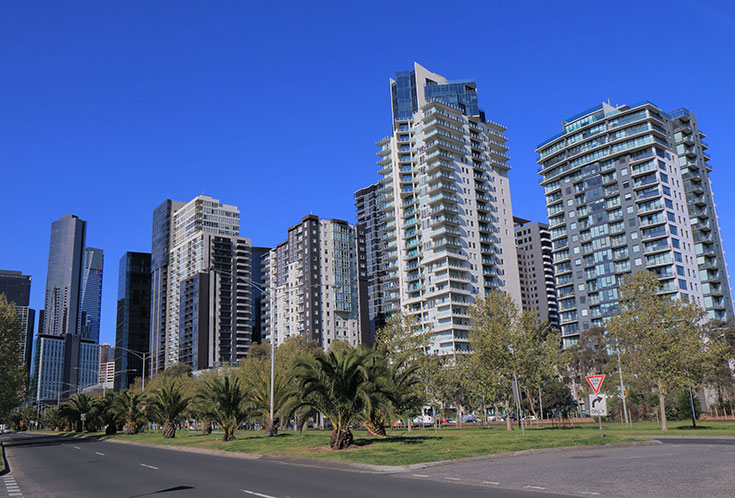Research into protecting building standards to protect occupants against heat stress
Researchers from the Melbourne School of Design have called on Australia to adopt building standards to protect occupants against heat stress. This follows a study that if a heatwave hit Melbourne and the power blacked out, most of the city’s apartment buildings would bake as air conditioners failed and indoor temperatures exceeded international health standards.

The researchers say heat stress inside apartments is a real issue and more control is needed, both in new and existing buildings (tktktk/123rf)
Academics from the MSD modelled six common apartment designs in Melbourne and all six failed standards for new buildings set in France, the UK, Germany and the US. There are no health standards to ensure against heat stress in the Building Code of Australia.
Lead researcher and construction scientist, Chris Jensen, said the results are a wake-up call, particularly as scientists are predicting longer and more frequent heatwaves.
“The research highlights to the public that heat stress inside apartments is a real issue and that we need to do more to control for this, not only in new buildings, but also for existing buildings,” Jensen says.
The researchers modelled how six common Melbourne apartment designs could cope with excessively high temperatures by testing them against the heatwaves that hit Melbourne in January and February 2009, including the Black Saturday bushfires of February 7.
They also chose a worst-case scenario by modelling west-facing apartments that are most exposed to the sun. All six sample apartments failed the four standards they were tested against.
Jensen says that although it is possible that under a new standard tailored to the Australian climate more buildings would pass, it is still likely that many existing apartments would not.
To improve existing buildings, the study found that the easiest and most effective strategies for apartments included:
-
Improving ventilation both physically and operation by occupants;
-
Using external heat reflective coating and paint;
-
Installing appropriate shading; and
-
Build greater awareness among occupants of what they can do in heatwave conditions to keep comfortable.
This report has been produced by the University of Melbourne for the Australian Communities Foundation Green Cities Innovation Fund to document an international review on high-rise apartment building thermal performance and comfort in heat wave conditions. This identified four international standards that represent best practice in protecting the health of apartment residents in heatwave conditions. Using computer energy modelling, six apartment designs typical to Melbourne were performance tested against the international standards, the main research question being: ‘How will they perform in free running mode – that is if there is no ability to turn on mechanical cooling systems?’
The computer model was developed for the six buildings using construction elements, and standard occupancy parameters. A weather data set based on a severe heatwave as experience in Melbourne in 2009 was used. The result of the six buildings that were tested against the international standards showed that none of the apartments would comply with the standards under these conditions.
To investigate what could be done, the worst performing apartment design was retrofitted in the model to determine the type of upgrades that would be required for this apartment to comply. This showed that even the worst performing building could be retrofitted using standard retrofit strategies to comply with two of the four international standards and protect their residents.
Key recommendations of this report are that these retrofits tested be considered for all existing apartments, that new apartment regulations consider best practice international standards for summer comfort and, finally, that until retrofits are able to be implemented the residents of apartments have an action plan if heatwave conditions occur.
The full report can be obtained here (PDF)